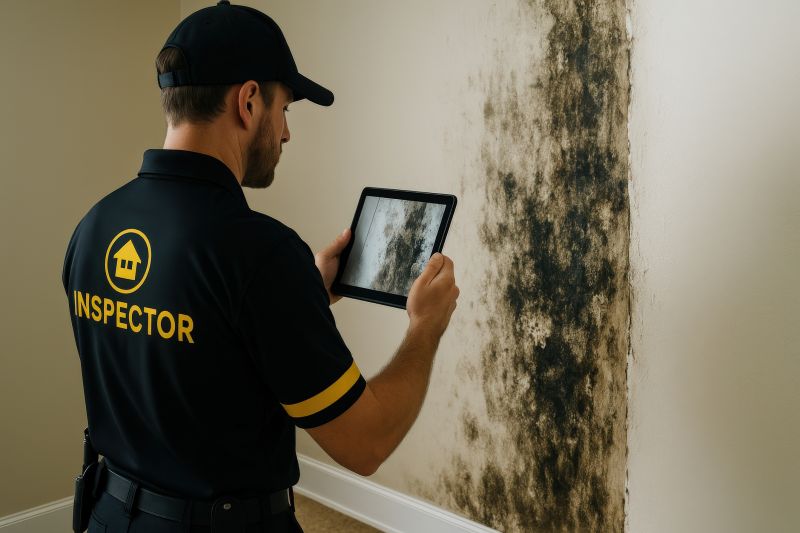Top-Rated Products For Mold Detection And Inspection
Identify the most effective tools available for detecting mold early and maintaining a healthy environment.
 Mold inspections are a crucial step in identifying potential indoor air quality issues and ensuring a safe living or working environment. The process involves various tools and devices designed to detect mold presence, moisture levels, and air quality. These products range from simple testing kits to advanced electronic detectors, each suited to different levels of inspection detail and expertise. Proper use of these tools can help determine whether mold growth is present, its extent, and possible sources of moisture that contribute to mold development.
Mold inspections are a crucial step in identifying potential indoor air quality issues and ensuring a safe living or working environment. The process involves various tools and devices designed to detect mold presence, moisture levels, and air quality. These products range from simple testing kits to advanced electronic detectors, each suited to different levels of inspection detail and expertise. Proper use of these tools can help determine whether mold growth is present, its extent, and possible sources of moisture that contribute to mold development.
Top Overall Option
Multi-Function Mold Inspection Kit
A versatile mold inspection kit typically includes a combination of moisture meters, air quality monitors, and surface testing tools. Such kits provide a comprehensive approach to detecting mold and moisture issues, making them suitable for both DIY inspections and professional assessments. They often feature user-friendly interfaces, clear instructions, and reliable readings, helping users identify problem areas without extensive technical expertise.
Types of Products For Mold Inspections
Moisture Meters
Devices that measure moisture levels in building materials, helping identify areas prone to mold growth.
Air Quality Monitors
Electronic devices that detect mold spores and airborne pollutants to assess indoor air quality.
Surface Testing Kits
Swabs, tapes, or petri dishes used to collect mold samples from surfaces for laboratory analysis.
Thermal Imaging Cameras
Infrared cameras that identify temperature differences indicating moisture intrusion behind walls or ceilings.
VOC Detectors
Devices that measure volatile organic compounds, which can be associated with mold and indoor pollutants.
Humidity Meters
Instruments that monitor ambient humidity levels, helping prevent conditions conducive to mold growth.
Laser Particle Counters
Advanced devices that count airborne particles, including mold spores, for detailed air quality analysis.
Infrared Thermometers
Handheld devices for quick temperature readings that can assist in identifying moisture problems.
Popular Choices
Simple kits for collecting mold samples at home, suitable for initial assessments.
Portable devices that provide quick moisture level readings in building materials.
Compact electronic devices that monitor airborne mold spores and pollutants in real time.
Non-invasive tools that visualize temperature variations indicative of hidden moisture.
Easy-to-use kits for collecting surface samples for lab analysis of mold presence.
Devices that record humidity levels over time to identify persistent moisture issues.
Portable sensors that detect volatile organic compounds associated with mold and other pollutants.
Advanced tools for detailed airborne particle analysis, including mold spores.
Handheld devices for quick surface temperature checks to identify potential problem areas.
Effective mold detection often begins with visual inspection, but this is not always sufficient, especially for hidden mold behind walls or under flooring. Therefore, specialized products such as moisture meters and air quality monitors become essential. These devices can identify elevated moisture levels that typically support mold growth, providing early warning signs before visible mold appears. For more comprehensive assessments, some professionals utilize thermal imaging cameras to detect temperature differences indicative of moisture intrusion.
In addition to electronic devices, mold testing kits are popular among homeowners and inspectors for collecting samples that are later analyzed in laboratories. These kits typically include swabs, petri dishes, or tape lifts to gather mold spores or surface samples. The results can help determine the type of mold present, which may influence remediation strategies. Combining multiple inspection tools often yields the most accurate understanding of mold issues, especially in complex or hard-to-reach areas.
Investing in quality inspection products can aid in early detection, potentially reducing costly repairs and health risks. Whether for routine maintenance, post-remediation verification, or initial assessment, having the right equipment ensures thorough evaluations. It is important to select products that are easy to use, reliable, and appropriate for the specific inspection needs. Understanding the capabilities and limitations of each tool can lead to more informed decisions and better outcomes in managing indoor mold concerns.
Key Buying Considerations
- Determine whether the device is suitable for DIY use or professional inspections.
- Assess the range and sensitivity of moisture meters and air quality monitors.
- Check if the product provides easy-to-understand readings or requires calibration.
- Consider the ease of use and whether the device has clear instructions or user interface.
- Evaluate the device’s portability and whether it’s suitable for inspections in hard-to-reach areas.
- Review the accuracy and reliability based on user feedback or specifications.
- Look for products that include necessary accessories or testing supplies.
- Identify if the device offers real-time monitoring or data logging capabilities.
- Ensure compatibility with other inspection tools if planning to use multiple devices.
- Consider the maintenance and calibration requirements for long-term use.
- Check for warranty or customer support options.
- Review the size and weight for ease of handling during inspections.
- Determine if the device can detect a range of mold-related pollutants or only specific indicators.
- Evaluate the battery life or power source for extended use.
- Research the product’s reputation and user reviews for consistency and performance.
This page contains affiliate links. We may earn a commission if you make a purchase through these links, at no additional cost to you. Our goal is to provide helpful and accurate information to assist in your selection process.
